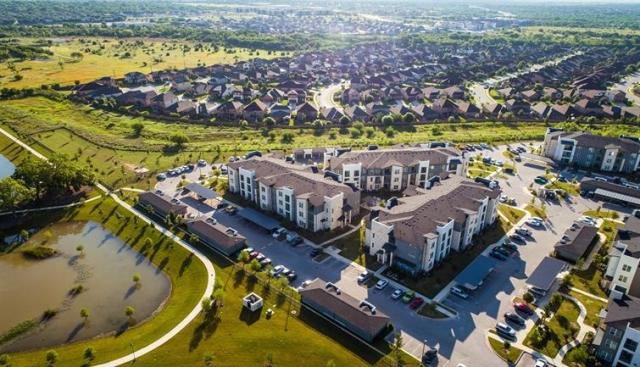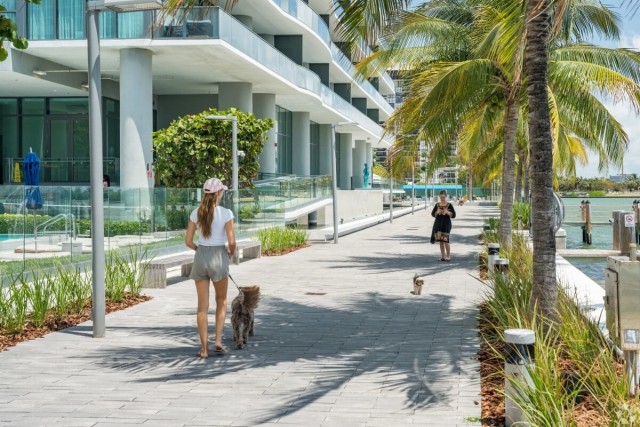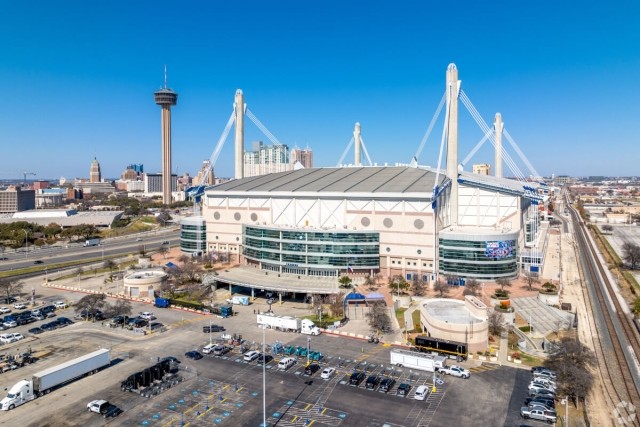According to the USPS, nearly 16 million people have moved since the pandemic began. Where are they going? Well, the trend seems to be to the suburbs. According to CoStar data, suburban apartment rents are holding steady while those in downtown areas are falling. While this trend could be temporary as some renters move back to city centers after the pandemic, many will likely remain in the suburbs. A recent poll conducted by Marketplace-Edison Research found that 22 percent of the US population have moved or are planning to move in the next six months. So, what is it about the ‘burbs?
What is a suburb?
A suburb might be a city, town, or even a census-designated place (CDP). Suburbs can be small and quiet or large and busy. The thing all suburbs have in common is location. Suburbs are situated on the outskirts of a city center, within commuting distance to the metro area’s downtown.
Suburbs are like satellites orbiting around a large, densely populated city, with highways and interstates connecting the suburbs to the city like an intricate web. The city itself and its surrounding suburbs are collectively considered a metropolitan area, or metro.
Suburban areas are not rural. Rural communities are farther from the metro area and often lack easy access to the city center, making it less convenient for commuters. Rural economies tend to rely on agriculture, with farms dotting the expansive landscape.
Are suburban apartments cheaper?
For the most part, rent in the suburbs is less than that in the city. For example, a one-bedroom apartment in Downtown Chicago averages about $2,000. Travel about 20 miles from downtown to Clarendon Hills, a popular Chicago suburb, and a one-bedroom apartment averages $1,390. If you are willing to head a bit farther from the city center to Naperville, the average rent drops to about $1,310.
A one-bedroom apartment in New York City rents for about $3,290. Head about 20 miles northwest to Little Falls, New Jersey and you could rent a one-bedroom apartment for about $1,590. The popular borough Staten Island, where you can take the iconic Staten Island Ferry to Lower Manhattan, also averages about $1,590 for a one-bedroom apartment.
While rent in Downtown Los Angeles has decreased roughly 10 percent in the past year, the average one-bedroom apartment costs about $2,340 a month. But, even with rents trending down in LA, it’s still less expensive in suburbs like South Pasadena, where a one-bedroom apartment rents for about $1,640.
If you are moving to Boston, an apartment in the city will cost about $2,680 for a one-bedroom. But in Boston’s suburbs, like Brookline, you’ll pay slightly less. A one-bedroom apartment in Brookline is about $2,350.
In addition to paying less in rent, you’ll likely find suburban apartments provide more space and community amenities than you’ll typically find in downtown apartments. It’s easier to find parking, there are often more parks, and some rentals offer outdoor spaces, ample parking, and even backyards.
Factors to Consider When Moving to a Suburban Area
Before you pack up and move to the ‘burbs, there are some things to consider. Suburban communities tend to be family-oriented, so while you’ll find more parks and playgrounds along with larger floor plans, you’ll also discover that there are fewer restaurants, theaters, and nightlife. Suburbs are quieter than cities, with far fewer options for entertainment.
While more suburban cities are adding sidewalks and bike lanes for residents, many still don’t offer these types of amenities. However, you will find more hiking trails and parks for walking and bike riding.
Because suburbs tend to be more spread out, you will likely need a car to get around unless the suburb has an extensive mass transit system. In most suburbs, you’ll have to drive to restaurants and stores rather than walk. However, you’ll find it much easier to park in the suburbs than you would in the city, with many shopping plazas and grocery stores having their own parking lots.
How to Find a Suburban Neighborhood
You might be wondering … do suburbs have neighborhoods? The answer is yes — but they look very different from city neighborhoods. Neighborhoods in the city tend to be dense and varied, with businesses and apartments side by side. The corner market is a short walk from your city apartment — it could even be below you. Neighborhoods tend to blend from one to the next, with little transition between them. Most city neighborhoods were never planned, but rather they grew organically.
In the suburbs, most neighborhoods are residential communities. Unlike city neighborhoods, most of these are planned housing developments with similar-looking homes (giving rise to the term, “cookie-cutter”) along wide streets that often end in cul-de-sacs. Suburban neighborhoods are often governed by a homeowner’s association (HOA), so keep that in mind if you are looking for a single-family house to rent. HOAs often charge fees and have rules that you’ll have to follow.
Apartment communities in the suburbs are also different from their city counterparts. Because more land is available, these communities tend to be more spread out. This leads to more green space, with many suburban apartments featuring parks, walking trails, picnic areas, and even lakes. These communities often offer amenities like clubhouses, swimming pools, and fitness centers.
You’ll have more options in the suburbs, where housing ranges from single-family homes to duplexes to townhouses to apartments. Most of the apartment communities in the suburbs are low- and mid-rise rather than high-rise buildings. Choosing a suburban neighborhood will depend on what type of housing you are looking for, since these communities tend to be grouped together, often with a small commercial area that contains shops, restaurants, and other businesses.
What to Look for in a Suburban Rental
According to a 2018 study conducted by the Pew Research Center, 32 percent of adults in the US said they would move to a different community if they could. Many of those living in suburban and rural areas said they would move to a similar type of community. In fact, 41 percent of those living in the suburbs said they would choose another suburban community. For those living in the city, 28 percent said they would move to another location in the city, while 41 percent said they would like to move to the suburbs.
Whether you are currently living in a suburban area and want to stay, or you are moving from the heart of the city to the suburbs, there are things to consider when looking for your new suburban rental.
Commute times
If you will be commuting into the city, look for a suburban neighborhood with the best commute. Factor in things like proximity to highways, traffic patterns, and the average commute time from the neighborhood to your work or school. On Apartments.com, use the Commute Tool to find rentals that fall within your commute time. On the map, click the “Commute” button. Type your work or school address into the search bar, then choose your travel mode. Add how long you want your commute to be in minutes and select whether you’ll be commuting during rush hour or with no traffic. Click “Done” and the apartments within the highlighted section will meet your commute criteria.
Amenities and features
Since many suburban communities tend to be spread out, you may want to find a rental close to the things you enjoy doing most. You might also want to find an apartment community that provides these amenities on-site. For example, if you have a pet, look for a rental near a dog park or find an apartment community with an on-site dog park. If you can’t get through the day without your morning workout, you’ll want to find a place near or with a fitness center. Those who spend their free time shopping and dining out might want to find a place near the commercial area of the suburb.
The community
While there may be less to do in the suburbs, that doesn’t mean there’s a lack of community. In fact, suburban communities tend to be relaxed and friendly, with neighborhoods routinely having get-togethers like block parties and seasonal celebrations. Look for a suburb that hosts a variety of events and festivals. While gatherings like farmer’s markets, outdoor concerts, and parades may be on hold until after the pandemic, you might appreciate these community-oriented events if you decide to stay. If you have children, look for a suburb with a highly rated school district, plenty of parks, and activities for kids like children’s theaters and museums.
The cost
While most suburbs offer a lower cost of living than large cities, it varies. And you’ll have to factor in commuting expenses and higher utility bills since larger floor plans may require more to heat and cool. Other expenses you might have in your suburban rental that you didn’t have in your city apartment might include lawn maintenance, HOA fees (unless your landlord pays them), and furniture (to fill all your extra space).
Don’t let those cookie-cutter houses fool you — every suburb is different. Those closer to the heart of the city may feel busier and more crowded, while the suburbs farther out may have a more pastoral feel. Do your research to find the suburban rental that fits you best and start enjoying life in the ‘burbs.






